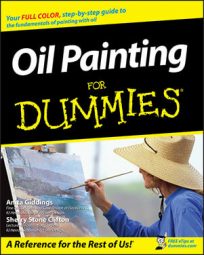This discovery was a great leap forward for artists. The linseed oil allowed for a buildup of transparent layers of paint to create subtle and glowing colors. Oil paint has been the epitome of painting ever since.
Today, the paint you purchase in the store is a blend of pigment (the material that gives paint its color) and binder (which "glues" the pigment to the support). In the case of oil paint, the binder is linseed oil. When you buy a tube of paint, the proportion of pigment to binder, the quality of the pigments used, and the way these two substances are mixed together determine the quality of the paint.
You have the benefit of centuries of experimentation at your disposal. You have so many grades, colors, and types of paint to pick from, and almost all are top-quality paints. In years past, artists were subject to unstable paints that changed color over time, as well as some very toxic pigments! The popularity of oil painting and the good work of the American Society for Testing and Materials (ASTM) have provided you with the assurance that your paints are tested and safe.
Some toxic colors are still available. They have unique qualities that can't be perfectly substituted with safer materials. Artists who use materials such as lead white (or flake white) and Naples yellow (or antimony yellow) must be aware of the dangers of the materials and take precautions.
You have no reason to expose yourself to toxic materials to pursue oil painting. Oil paint is safe and easy to work with if you always look for the ASTM seal on the tubes of paint that you purchase and if you handle the paint in the appropriate manner. The ASTM D 4236 seal assures you that the product is properly labeled for health hazards. You can also take precautions as you work. (And no matter what you see van Gogh do in a movie, don't eat your paint!)
Here are some precautions to take as you work with oil paints:- Don't eat anything while you're painting.
- Don't drink anything while you're painting.
- Don't smoke while you're painting.
- Use adequate ventilation.
- Never sand an oil painting; the dust particles from the pigments are particularly dangerous.
- Don't paint with your fingers.

